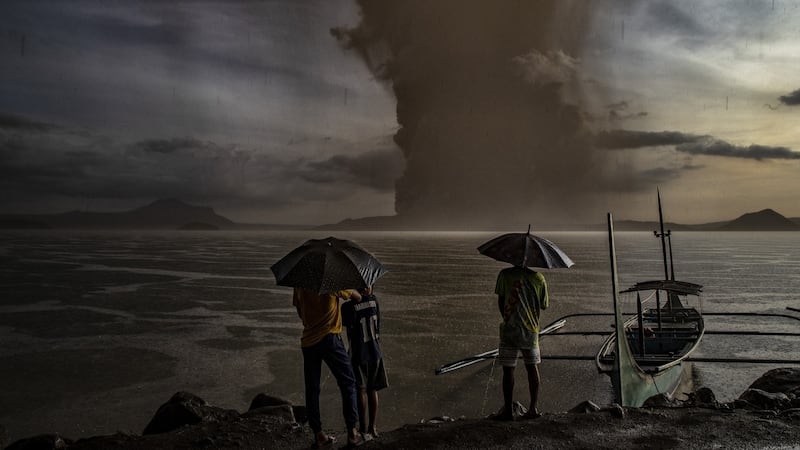A small volcano near the Philippine capital has erupted with a massive plume of ash and steam, prompting the evacuation of tens of thousands of people and forcing Manila’s international airport to shut down.
The Philippine Institute of Volcanology and Seismology said Taal Volcano in Batangas province south of Manila blasted steam, ash and pebbles up to nine miles into the sky.
The volcanology institute raised the danger level around Taal three notches on Sunday to level four, indicating “a hazardous eruption may happen within hours or days”, said Renato Solidum, who heads the volcanology institute.
Level five, the highest, means a hazardous eruption is under way and could affect a larger area.

There were no immediate reports of injuries or damage, but authorities scrambled to evacuate more than 6,000 villagers from an island in the middle of a lake, where the volcano lies, and tens of thousands more from nearby coastal towns, officials said.
“We have asked people in high-risk areas, including the volcano island, to evacuate now ahead of a possible hazardous eruption,” Mr Solidum said.
Renelyn Bautista, 38, who was among thousands of residents who fled from Batangas province’s Laurel town, said she hitched a ride to safety from her home with her two children, including a four-month-old baby, after Taal erupted and the ground shook mildly.
“We hurriedly evacuated when the air turned muddy because of the ashfall and it started to smell like gunpowder,” Ms Bautista said by phone.
Suspended flights
All departing and arriving international and domestic flights were suspended on Sunday night at Manila's international airport "due to volcanic ash in the vicinity of the airport" and nearby air routes, the Civil Aviation Authority of the Philippines said.
Taal lies around 37 miles south of Manila.

Authorities said they were considering diverting flights to unaffected airports outside Manila.
The volcanology institute reminded the public that the small island where the volcano lies is a “permanent danger zone,” although fishing villages have existed there for years.
It asked nearby coastal communities “to take precautionary measures and be vigilant of possible lake water disturbances related to the ongoing unrest”.
Heavy to light ashfall was reported in towns and cities several miles from the volcano, and officials advised residents to stay indoors and don masks and goggles for safety.
Authorities recorded a swarm of earthquakes, some of them felt with rumbling sounds, and a slight inflation of portions of the 310m volcano ahead of Sunday’s steam-driven explosion, officials said.
One of the world’s smallest volcanoes, Taal is among two dozen active volcanoes in the Philippines, which lies along the so-called Pacific “Ring of Fire”, a seismically active region that is prone to earthquakes and volcanic eruptions.
About 20 typhoons and other major storms each year also lash the Philippines, which lies between the Pacific and the South China Sea, making it one of the world's most disaster-prone countries. – Associated Press











